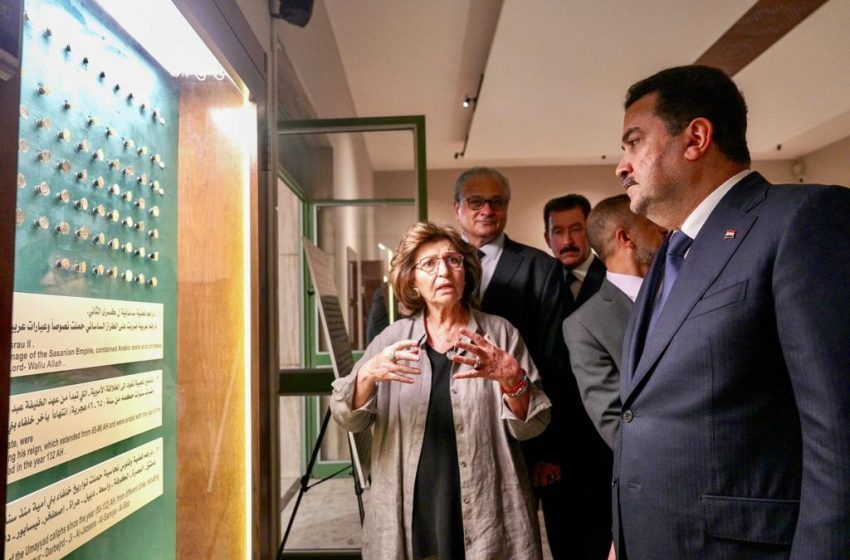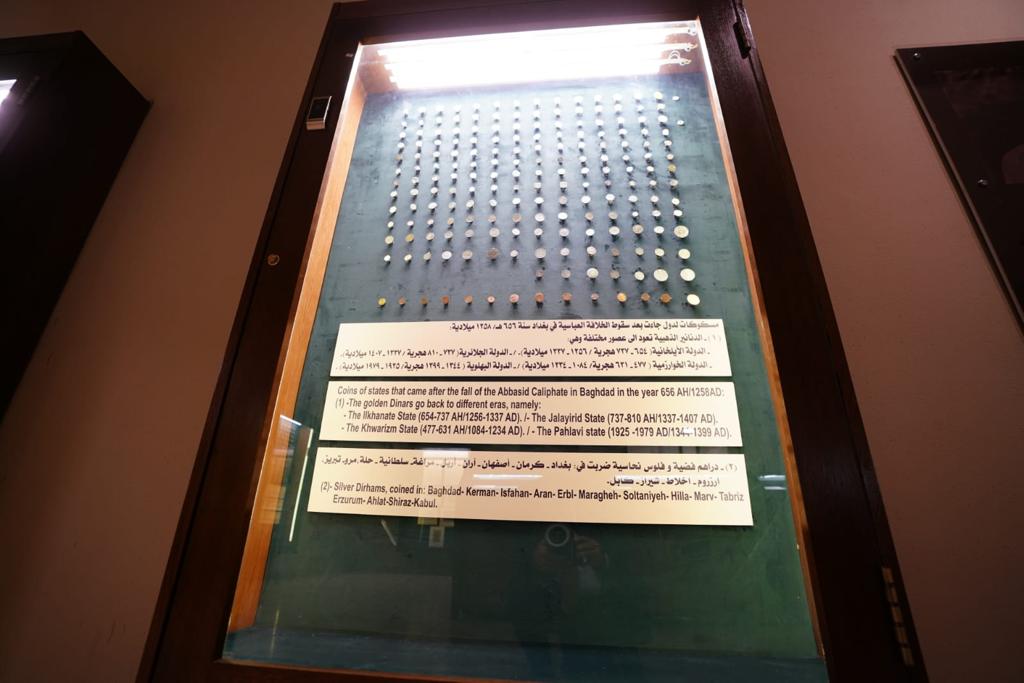The National Museum of Iraq opens Al-Sarraf Gallery

Thuraya Al-Sarraf with Iraqi Prime Minister Mohammed Al-Sudani.
Baghdad – (IraqiNews.com) An exciting week in Baghdad; the grand opening of the much anticipated and meticulously curated Al-Sarraf Islamic Coins Gallery. Nestled within the National Meusum of Iraq it houses an extensive display of coins donated by Abdullah Al-Sarraf. In attendance were many prominent figures, including Iraqi Prime Minister Mohammad Shia Al-Sudani.
Abdullah Al-Sarraf (1910-2000), was the generous donor of this massive collection. He was a prominent businessman whose generosity and passion helped further the arts, literature and poetry, and whose house in Najaf served as a refuge and station for intellectuals and poets.
Over the course of ninety years, Al-Sarraf developed an extraordinary passion for collecting and studying rare antique coins, particularly focusing on ancient Islamic coins. Each coin held a story, serving as tangible artifacts for historians and archeologists, representing a glimpse into the past and a connection to the people and cultures that had once flourished. They reflect different periods, kingdoms, countries and rulers throughout time, as well as, a rich tapestry of Islamic civilization.
On March 18, 1968, Al-Sarraf gifted his treasured collection to the National Museum of Iraq which consisted of pieces of gold, silver and copper.

In a previous interview Al-Sarraf attributes his passion for acquiring coins to his father. He shares, “In the year 1935, I traveled to Palestine and bought coins from the markets of Jerusalem and coins from Damascus. I also bought from Europe and returned them to the homeland. Thus, the amount of coins became significant, but it was difficult for me to solve their hierarchies, so I went to the Iraqi Museum in Baghdad and sought the help of an expert.”
“In the matter of coins, my teacher, Mr. Nasir Al-Naqshbandi, author of the book Islamic Dinar, became my mentor, helping me explore Islamic money in different eras, which took 40 years,” he adds.
Al-Sarraf stayed for a year and a half working in the hall that the Ministry of Culture allocated for his coins. In appreciation for his material and scientific efforts, a grand ceremony was held in 1969.
In 2003, during the Iraq War, the museum was looted, and many artifacts were either destroyed or stolen. Without a doubt, this was one of the most devastating losses for the country’s cultural heritage, causing international outcry. Fortunately, the benefactors in the museum hid all the coins in the basement.
One of twelve children, his second daughter, Thuraya Al-Sarraf has dedicated countless hours making sure her father’s selflessness and sacrifice do not go in vain. She has spent almost four years, with the cooperation of the Antiquities and Heritage Authority and the owners of the National Museum of Iraq, bringing the collection back to life.
“The process of rehabilitating this hall took four years between the political circumstances that ravaged the country, the Corona pandemic, the difficulty of implementation, my travel, my health status, and many others,” recalls Thuraya.
By preserving these rare coins, one can better understand the deep history of Iraq, the Levant and beyond- one that spans several millennia. These tangible pieces are part of Iraq’s heirloom and heritage. A national resource to reflect upon, appreciate and learn from for generations to come.
